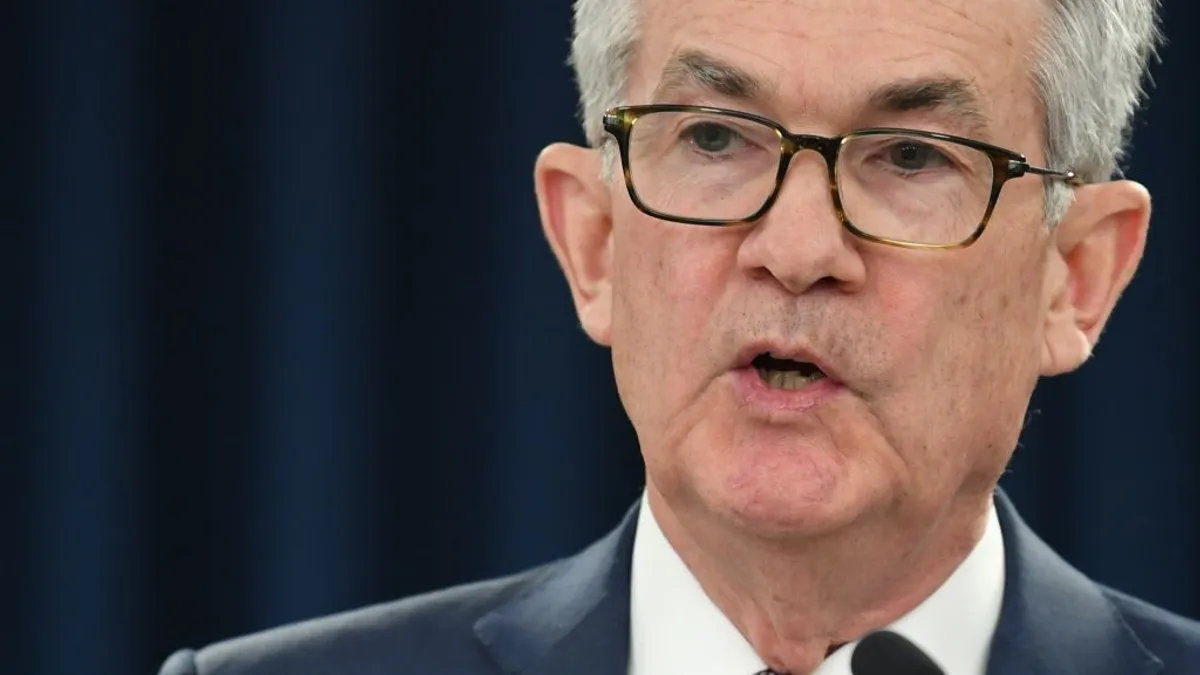The coronavirus has compelled CFOs to build up resistance — not just to COVID-19 disruption but to other external risks such as cyber attacks, tariff wars and climate change.
The pandemic underscored to CFOs the vulnerability of their companies to the broadest range of external risks in decades, according to financial executives and experts in business technology.
CFOs face the possible spread of COVID-19 variants, fragile supply chains, rising pressure for disclosures on sustainability and extreme weather such as the recent winter storms in Texas. They also need to watch for signs of financial instability from high levels of federal and corporate debt and record fiscal and monetary stimulus.
“We’re in uncharted waters with respect to the size of the risks we face,” according to Barry Keating, co-author of Forecasting and Predictive Analytics, now in its seventh edition. Companies that fail to forecast external threats based on analysis of near- or real-time data “are going to be the ones who don’t exist in the future,” said Keating, a professor at Notre Dame’s Mendoza College of Business.
During the pandemic CFOs have used advanced data analytics to cut costs, tighten cash management and safeguard supplies. For example, detailed analysis of consumer demand and economic growth in several countries is helping automakers adjust their just-in-time production to a severe shortage of semiconductors.
CFOs who most effectively manage risk today have discarded old forecasting methods that primarily relied on spreadsheets and backward-looking historical data. They have adopted advanced analytics that track external and internal risks based on high volumes of near- or real-time data, according to CFOs and experts in business technology.
Using cloud computing and data analytics, a CFO can perform the detailed econometric modeling that for decades many companies rejected as too costly, according to Prevedere CEO Richard Wagner. “It’s like having an army of economists in a box,” he said.
CFOs will sooner move on from traditional forecasting to advanced data analytics after recognizing that just 15% of the variables that shape business performance reside within a company, Wagner said.
The remaining 85% of factors — such as political unrest, recession, social turmoil and regulatory changes — influence a company from the outside, beyond a financial executive’s control.
Casting a wide net
A CFO can gather details on external risks from news reports, social media, regulatory announcements, quarterly earnings calls by industry leaders and other sources, according to Jérôme Basdevant, chief technology officer at Datamaran, a provider of software analytics. They can analyze the findings based on likelihood and potential business impact.
Financial executives with such information can identify and measure emerging risks, such as the reliability of suppliers in countries struggling with COVID-19 or the impact of lockdowns and other coronavirus stresses on the wellbeing of new company hires.
“You can transform something that was unstructured and difficult to assess into something that you can start to compare with your other risks,” Basdevant said.
Using a dynamic data dashboard, a CFO can alter the degree and balance of risks based on a range of scenarios and build a strategy for risk management that is comprehensive, forward-looking and timely.
“You need to be able to look at what’s actually going on” across the full landscape of risks, rather than rely on expectations based on internal historical data, according to Sharon Daniels, CEO at Arria NLG, a provider of artificial intelligence that turns structured data into natural language. When it comes to identifying and measuring risks, “there is just no room to be any further behind.”
CFOs who disregard outside threats may face greater regulatory and conduct risk. Pressure from regulators and investors will probably compel businesses to disclose more about external risks related to public health, climate and workforce diversity, The Conference Board and Datamaran said in a study.
“The events of 2020 brought risks related to climate change, social justice issues and public health to the forefront of public consciousness,” they said, noting that U.S. and European companies currently give limited attention to those issues in public statements.
“Now is the time for companies to examine whether their financial disclosures adequately acknowledge systemic risks,” The Conference Board and Datamaran said.
The Securities and Exchange Commission has already started such an examination. It is considering ways that companies should provide detailed disclosures on environmental, social and governance (ESG) risks.
Most CFOs foresee obstacles as they ramp up advanced data analytics this year, Gartner found. Eighty-two percent of financial executives have made adoption of such technology a top priority and 78% expect difficulties in reaching their goals, according to a Gartner survey of 173 CFOs.
Similarly, 99% of CFOs want to use real-time data to navigate risks but only 16% say they tap data at the needed scale, according to an Accenture survey of 450 financial executives at companies with at least $1 billion in revenue.
Thirty-four percent of CFOs rate real-time scenario planning as their highest priority for 2021, while 24% have made gaining real-time insights the No. 1 goal of their finance function.
Other benefits
Financial executives who launch near- or real-time data analytics often gain more than insights into external risks, the CFOs and experts in business technology said. For example, they benefit from more frequent and timely predictions.
Many CFOs at the start of the pandemic began meeting with their leadership teams on a daily or weekly basis rather than monthly, Wagner said. They “now have to do ‘now-casting’” rather than forecasting, he said, “so they know what’s going on this week and next week.”
Advanced analytics shared on a data dashboard prompts structural improvements within a company by spurring communication and collaboration, the CFOs and business technology experts said.
“Risk has to be perceived and discussed in a collaborative manner,” OneStream Software CFO Bill Koefoed said. Given the variety and rapid evolution of external risk, “everybody has to have visibility into it, everybody has to be talking about it.”
A data dashboard shared throughout a company breaks down organizational silos and opens the way for “self-serve analytics,” Daniels said. “Your IT department is basically democratizing data.”
Advanced data analytics reveals opportunities as well as risks, the CFOs and experts in business technology said.
“You could say that those are new risks or new challenges, but actually think of them more as opportunities to strengthen your company,” Dun & Bradstreet CFO Bryan Hipsher said.
For example, a technology company could view social media describing a lack of diversity in its industry as an opportunity to refocus hiring on a broader demographic and stand out from rival companies, Basdevant said.
Using advanced data analytics, “you identify where you have the best opportunity to not only contribute to society, but also to differentiate yourself” from competitors, he said.
Mining data pays off
Insights from advanced data analytics can boost the bottom line.
A beverage company that was determined to dominate the space on store shelves in China knew it was overproducing and holding excessive inventory but lacked accurate estimates of future demand. It aimed to improve forecast accuracy by at least 3% and save $9 million by reducing inventory, Wagner said.
The company analyzed several consumer indices — including online spending, retail sales and spending on luxury goods, gasoline and travel — and improved its forecast for beverage demand four weeks in the future by 18%. It cut inventory with confidence and met its cost savings goals, Wagner said.
AT&T sought through data analytics to more effectively identify ESG concerns, improve communication with stakeholders and gain insights for its decisions on reporting and strategy, Basdevant said. AT&T’s usual surveys lacked the nuanced, qualitative insights that it needed.
The company used software to automate information gathering from social media, regulatory notices, peer reports and traditional media. It also surveyed 26,000 stakeholders across several groups, including investors, business customers and consumers, expanding its reach well beyond prior research.
Using its findings, AT&T plotted several issues on a chart — including work/life balance, company water use and network security — based on relevance to company performance and importance to consumers and stakeholders. The resulting scatter plot helped rank priorities and clarify company strategy, Basdevant said.
Monitoring external risks
CFOs today identify several major external risks, all of which can be tracked around the clock by advanced data analytics. For example, the increase in the yield on the 10-year Treasury note from 0.917% on Jan. 4 to more than 1.5% on March 5 has pushed up corporate borrowing costs. With analytics, a CFO can monitor in depth the real-time impact on markets and company cash and investments.
Rising interest rates is a major concern for 49% percent of the respondents to the Accenture survey. The trend threatens to undermine Federal Reserve stimulus. At the outset of the pandemic, the central bank cut the benchmark interest rate to a record low and began buying $120 billion in bonds each month.
“Whenever there is cheap money, that has come to an end — not always in a good way,” Koefoed said.
Record monetary stimulus and a $1.9 trillion coronavirus rescue package headed toward congressional approval have fueled concerns the economy will overheat and stoke inflation.
The surge in federal spending “is going to heat up the economy like putting a blowtorch to a pan on your stove,” Keating said.
Forty-seven percent of survey respondents flagged further pandemic disruption and the possibility of recession as leading concerns, while 42% identified hiring and retaining talent.
Even in the face of an unprecedented range of external risks, many financial executives still use just internal data and outdated technology to build their business strategy, the CFOs and experts in business technology said.
“I’m afraid a lot of firms today do their forecasting on the back of an envelope,” Keating said. “The use of predictive analytics is a very important way to compete.”






















